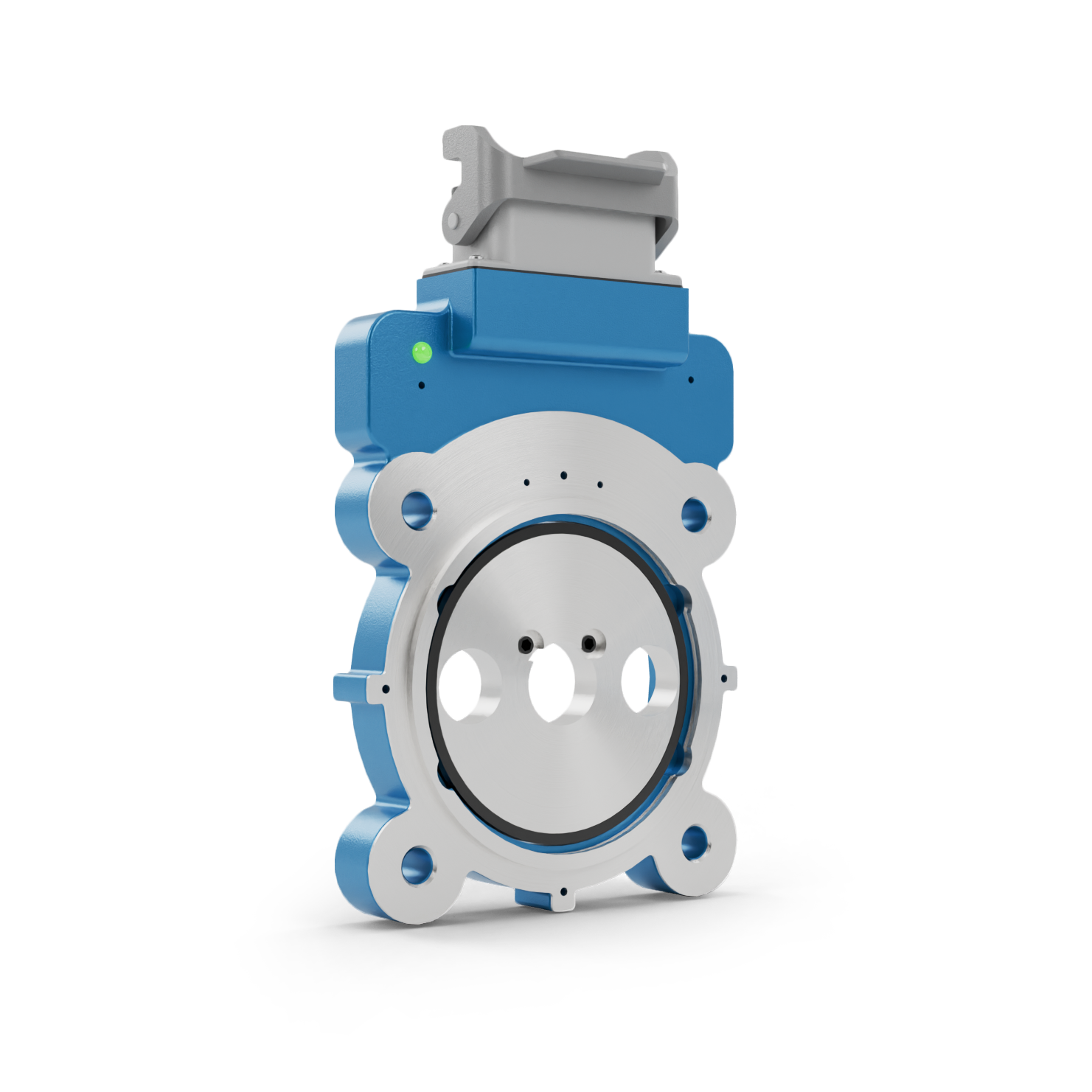Robust Magnetic Sensing with Wide-Gap Magnetoresistive Technology
We offer magnetic encoders for a wide range of applications—from wind power and oil & gas to mining, paper mills, metals, conveyors, and cranes.
Our sensors use magnetoresistive elements to detect magnetic fields, producing sine waves that convert to square waves. This enables high sensitivity and resolution (2–8192 PPR), zero-speed operation, and cable lengths up to 2000 feet.
Wide-Gap magnetoresistive technology minimizes interference from motors and brakes, while eliminating damage from sensor contact—ensuring long-lasting performance in demanding environments.

Advanced Magnetic Encoder Technology
Penlink offers high-performance magnetic encoders built for precision and reliability in demanding environments. Unlike optical alternatives, these encoders thrive in harsh conditions—dust, moisture, and extreme temperatures—making them ideal for offshore cranes, wind turbines, and industrial mills.
Using advanced magnetic sensing and Wide-Gap technology, they deliver accurate position and speed feedback while allowing greater sensor-to-disk distances. This reduces installation complexity and eliminates crash risks.
Available in incremental and absolute models, our encoders feature high resolution, excellent linearity, and robust signal output—ensuring smooth, low-maintenance operation across diverse motion control applications.
Frequently Asked Questions
What Exactly Is an Encoder?
An encoder (also known as a tachometer or rotary pulse generator) is an electromechanical device that converts mechanical rotation into electrical pulses. These pulses can be used to determine speed, position and length. A typical use is for feedback in AC and DC motor drive control systems. They are also used to measure and instrument process lines to improve productivity.
How Does an Encoder Do Its Job?
Reluctance Style (Tachometer)
Uses a magnetic pickup to detect steel rotor teeth, generating a sine wave output. No power supply is needed, making it cost-effective. However, it lacks low-speed sensing and produces weak signals until around 30–50 RPM.
Magnetoresistive
Employs magnetic field-sensitive resistors to convert sine waves into square waves. Offers high sensitivity and resolution (2–100,000 PPR), zero-speed operation, and long cable reach (up to 2000 ft). Wide-Gap technology minimizes interference and prevents sensor damage.
Photoelectric/Optical
Uses an infrared LED and slotted disk to generate amplified square wave signals. Supports up to 32,768 PPR and zero-speed operation. Wide-Gap optical design resists shock and vibration, with no fragile glass components.
Why Choose Digital Encoders Over Analog Tachogenerators?
Analog tachogenerators rely on brushes that wear out over time, leading to signal drift and increased maintenance. In contrast, digital encoders have no wearing parts (except bearings), and modular versions eliminate even those—resulting in minimal upkeep.
Digital encoders maintain consistent output regardless of temperature or aging, unlike analog units made from copper and iron, which degrade over time.
They also offer better precision, stable performance, and typically cost less than high-end analog tachogenerators.
Best Coupling for Solid Shaft Encoders
Torsionally rigid, zero-backlash flexible couplings are recommended for solid shaft encoders, ensuring accurate signal transmission without mechanical play. For applications with high axial movement, spider-style couplings can be used as an alternative. These options are available as accessories for added convenience.
Do I Need to Align a Solid Shaft Encoder with a Flexible Coupling?
Yes. Flexible couplings can only compensate for minor misalignments that may occur after careful installation or over time due to temperature changes or bearing wear. Proper initial alignment is essential to ensure reliable performance and prevent premature wear.
How Do I Mount an Encoder on a DC Motor?
Most motor manufacturers offer standard mounting kits compatible with a wide range of encoders. We provide Mill Duty Encoders for various mounting styles, including:
- NEMA 56C Face (4.5″ flange)
- NEMA FC Face (8.5″ pilot)
- NEMA 12.5″ C-Face
- PY Style (2.5″ flange)
- Reliance (6.75″ rabbet)
Adapter flanges are also available to fit large-frame motors without standard flanges.
How Do I Mount an Encoder on an AC Motor?
Many AC motors—such as Marathon, GE, and Reliance—feature C-Face mounts that support modular encoders. For motors without standard flanges, hollow shaft encoders (e.g., HS25A, HS35A) simplify installation by mounting directly onto a stub shaft at the opposite drive end.
This approach eliminates the need for flange modifications and works well for both new and existing motors.
How Long Does an Encoder Last on a DC Motor?
With proper installation, alignment, and the right coupling (or none for modular/hollow shaft models), an encoder can typically last around 10 years—provided it’s used in a non-destructive environment.
Which Encoder Should I Use for a Critical Application?
All our encoders feature rugged electronics, but mechanical reliability is key—70% of failures stem from bearings and couplings.
For maximum durability, choose modular encoders like SMARTach III or THIN-LINE III models. These two-piece designs eliminate bearings and couplings by using the motor’s own shaft and bearings. The electronics are fully sealed against water, oil, and contaminants.
If your motor lacks a machined accessory face, hollow shaft encoders are a great alternative. They mount directly on a stub shaft and eliminate the need for couplings. For extreme conditions, select a heavy duty / explosion safe model with reinforced bearings, advanced sealing, and fully potted electronics for long-lasting performance.
Why Do Encoders Have a Second Output?
A second output serves as a backup for quick changeover if the primary fails, or it can support auxiliary systems like speed displays, controllers, or data logging.
In dual-output encoders, both outputs are fully isolated—ensuring continued operation even if one side is damaged. This is more reliable than designs where the second output simply mirrors the first.
